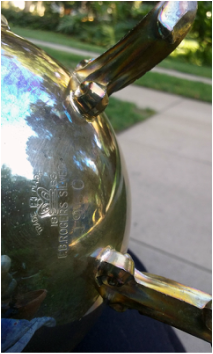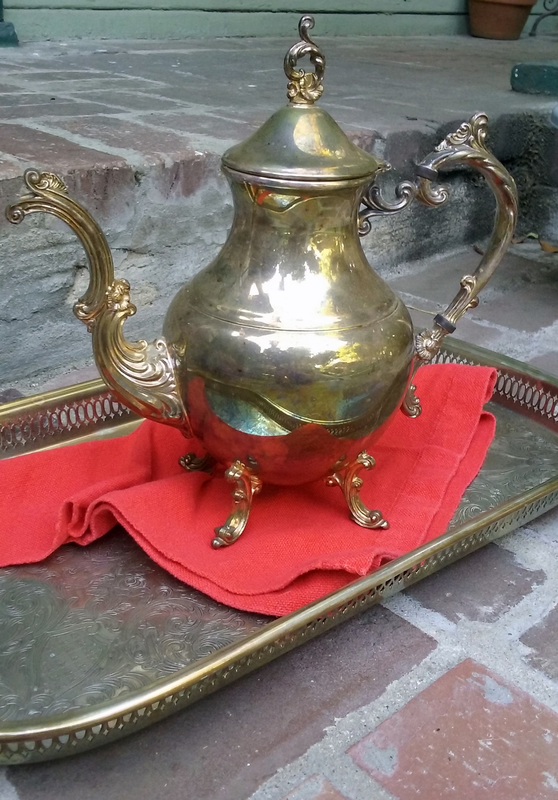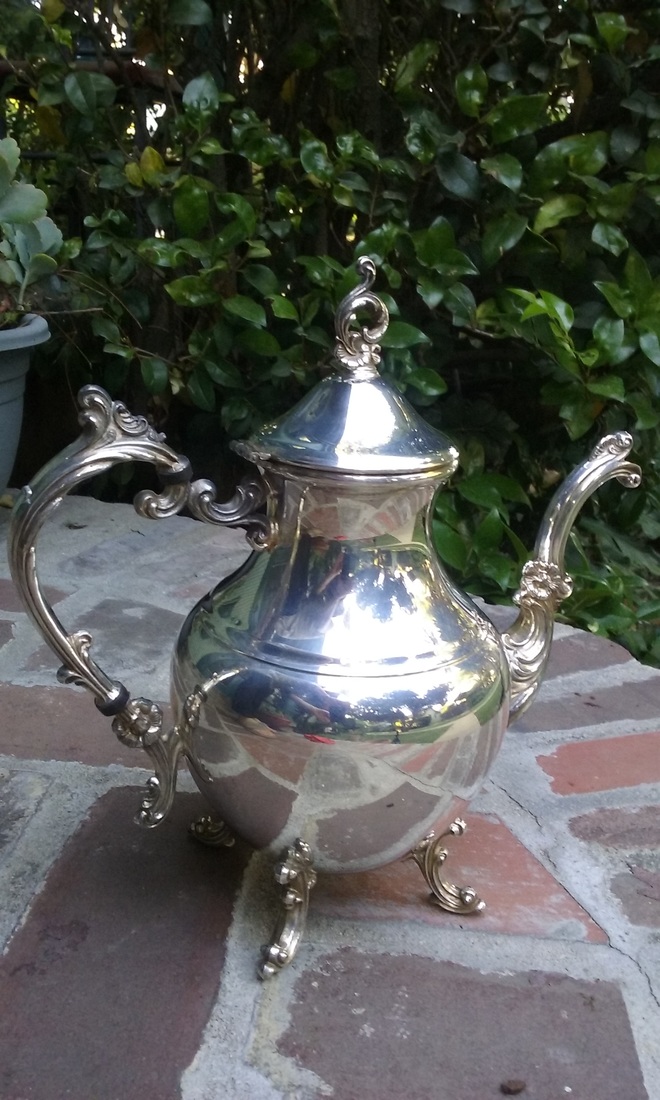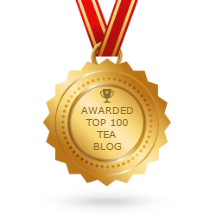 by Cassandra Vincent I found a lovely silver teapot in a unique second hand shop for $10! I was ridiculously excited. [Hey, we all have those things that connect us with the awe and joy of discovery - keeping our child-selves alive, well and creating. I encourage it!] I kept myself in check though & didn’t freak out the purveyor. She had 3 teapots, but 2 had damaged ornaments on the lid. The one I bought was in great condition though in need of a clean of course. This find led me to look into silver teapots more deeply. I have always thought them beautiful but not as practical as other forms. The heat conduction (ouch!) and the tarnishing/polishing cycle. I was curious about when they came about, what they looked like, who used them etc. The engraving on the base indicates F B Rogers as the make and what I understand to be the pattern number of 1960 (not the year of make). It’s not an antique nor is it pure silver, but interesting enough to feel like I have a cool piece. F B Rogers est. 1883 was a silver smithing company apparently known for their quadruple plate silver plating, which gives me an idea of what I’ve got. Did you know that the first silver teapot was shaped like an early coffee pot? Wider at the bottom, tapering to the top – this was found to be poor for brewing tea as the water in the wider bottom couldn't mix evenly with the water near the top = inconsistent cup. Thus the move to the ‘ball’ shape most often seen today. But there are pear shapes (like the one I found) and urn shapes, apple shapes...all such interesting incarnations (more on images in the 'Go Deeper Details' below). Silver ware was originally only in the houses of the very wealthy of course, both in Britain and the States. But as demand grew electroplating was created and silver was discovered in the western part of America. There arose a silver making boom in the mid-1800s with Boston being one of the main locations of silver craft in the US. The plating process made silver items cheaper and easier to create and therefore more accessible to those outside them realm of the rich. As to cleaning here are a couple of tips I learned – some by making mistakes!:
On my silver wish list is a tipping teapot with stand and warmer, and a creamer. Beautiful tea deserves beautiful vessels! Go Deeper Details
For more on this subject here are a few fun links. Enjoy!: Great BBC audio on tea in Britain from “ A History of the World in 100 objects” series: http://www.bbc.co.uk/radio/player/b00v71qr More: http://www.bbc.co.uk/ahistoryoftheworld/objects/FWYgWOCSSpKKuF3pctC6tA Silver teapots from the Met Museum collections: Main - http://www.metmuseum.org/toah/hd/coff/hd_coff.htm Martha Stewart did a great video on various silver teapot forms through the ages. With guest, Ed Munves of James Robinson, NYC with tea services dating from the 17th century both UK and US http://www.marthastewart.com/914609/history-english-silver-tea-sets#914609 |
AuthorCassandra Vincent CategoriesAll Classic Tea Flavored And Funky For Love Of Tea Herbs Infusions Lifestyle And Health Matcha Meditative And ASMR Sessions Recipes And Uses Specialty Tea Brands Spices Tea Accessories Tea Adjacent Tea And... Tea And A Laugh Tea And Art Tea And Holidays Tea And Music Series Tea And TV Tea Around The World Tea Cocktails Tea Events Tea In Film Tea In History Tea Innovations Tea Pros Tea Shops/Shops With Tea Tea Types Teaware |



 RSS Feed
RSS Feed